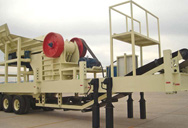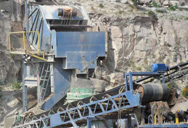


Detecting antimony and arsenic concentrations in the . the monitoring program was to collect baseline information on the concentrations of Antimony and Arsenic originating from the site of the proposed mining operations adjacent to Wild Cattle Creek. It is unknown whether contaminants are transported short distances resulting in localized impacts,
Read More
Mining and Toxic Metals - Alaska Community Action on Toxics. Dust emissions from the mine site during blasting and mining operations could contain any ... children are especially sensitive to the harmful effects of mercury.12 ... effects of antimony.24 According to the EPA, these health effects can include.
Read More
THERMOGRAVIMETRIC AND DISTILLATION STUDIES ON MERCURY, ANTIMONY AND ARSENIC SULFIDES M.I.R.L Distil lation results on three flotation concentrates from Alaska mining operations showed that cinnabar Regression Analysis of TGA Data for Antimony and Arsenic Activation 77 Energies Effects of Iron, Lime, Time and Temperature on . Get price
Read More
mining-related activities including extraction, mechanical and high temperature processing, transportation, and storage of mine waste products. To compare or describe the impacts of different types of mining operations, specific mining terms are used. 2.1. Generation of Dust and Aerosol An Overview Mining operations release arsenic into the ...
Read More
2019-6-27 timony and arsenic in two drainage systems within Denali National Park and Preserve, Alaska, both of which are impacted by historic an-timony mining operations. Based on the studies summarized above, we expect that the extent of arsenic and antimony transports within the drainages under examination will be strongly influenced by both
Read More
The arsenic/antimony concentration ratio was higher in Quillagua soil. The high concentrations of three elements determined in impacted soils from region V (Puchuncaví and Catemu valleys) clearly shows the impact produced in this zone by the industrial and mining activities developed in their proximities.
Read More
2015-5-14 Atmospheric arsenic emissions from copper smelting represent the largest contribution of arsenic from the mining and metals industry by far and have been the focus of pollution control technologies and increasingly stringent regulations. [8] Arsenic can also be leached out of some metal ores by cyanide or acid rock drainage but can be captured and removed from wastewater before it is
Read More
1997-11-28 A chemico-toxicological similarity between arsenic and antimony exists and their toxicology is often seen. Indeed, both elements possess several common properties, e.g. they are clastogenic but not mutagenic in the trivalent state and they have a carcinogenic potential: trivalent arsenicals are known to be human carcinogens and antimony(III) oxide (by inhalation) has been shown to cause lung cancer
Read More
2006-7-12 Arsenic and antimony concentrations in water and sediment samples collected from Prestea, a gold mining town in the Western Region of Ghana and its environs were studied. The concentrations of these elements were measured using instrumental neutron activation analysis (INAA). INAA was preferred to other modern analytical techniques because of its relatively higher selectivity, sensitivity
Read More
2015-5-14 Society for Mining, Metallurgy and Exploration, Inc. 12999 East Adam Aircraft Circle, Englewood, CO 80112 303 948 4250 The Role of Arsenic in the Mining Industry April 2015 . The purpose of this briefing is to provide a general overview about the occurrences of arsenic and its environmental and health impacts.
Read More
arsenic arsenic mining processing. Arsenic in soil results from human activities including pesticide use mining and ore processing operations operating coal burning power plants and waste disposal. Sites of former tanneries which make leather from animal hides have large amounts of arsenic
Read More
2020-11-30 ACCEPTED MANUSCRIPT 1 Arsenic, antimony, and nickel leaching from northern peatlands treating mining influenced water in cold climate Uzair Akbar Khan1*, Katharina Kujala1, Soile P. Nieminen2, Marja Liisa Räisänen3, Anna-Kaisa Ronkanen1 1Water Resources and Environmental Engineering Research Unit, University of Oulu P.O. Box 4300, 90014, Oulu, Finland
Read More
2019-9-23 The Exposure To And Health Effects Of Antimony. Antimony trioxide exposure is predominant in smelters. mining and exposure via glass working, soldering, and brazing are also important. conclusion: antimony has some useful but undoubtedly harmful effects on health and well-being and measures need to be taken to prevent hazardous exposure of the like. its biological
Read More
2006-7-12 Arsenic and antimony concentrations in water and sediment samples collected from Prestea, a gold mining town in the Western Region of Ghana and its environs were studied. The concentrations of these elements were measured using instrumental neutron activation analysis (INAA). INAA was preferred to other modern analytical techniques because of its relatively higher selectivity, sensitivity
Read More
2019-1-14 Mining and Arsenic. Arsenic occurs in various mineral forms, as arsenides in sulphide minerals and as arsenates. The most common mineral is arsenopyrite (FeAsS), which is also found in arsenolite (As 2 O 3), olivenite (Cu 2 OHAsO 4), mimetite (Pb 5 Cl(AsO 4) 3 and cobaltite (CoAsS).. In the weathering of sulphides, arsenic can be oxidised to arsenite and arsenate.
Read More
The arsenic/antimony concentration ratio as higher in Quillagua soil. The high concentrations of three elements determined in impacted soils from region V (Puchuncavi and Catemu valleys) clearly shows the impact produced in this zone by the industrial and mining activities developed in their proximities.
Read More
2021-6-19 Mining Operation: Types, Impacts and Remedial Measures! Mining is the process of taking mineral and other substances from the earth. These substances include metal compounds, non-minerals such as coal, sand, oil and natural gas and many other useful things. Mining provides iron and copper for making aeroplanes, refrigerators.
Read More
2021-5-5 The only major antimony deposit in North America is located in the Stibnite-Yellow Pine Mining District of central Idaho. This site is the largest reserve in the nation and is expected to supply roughly 35% of U.S. antimony demand on average for the first six years of production.
Read More
2021-1-6 Antimony is naturally present at low levels in the environment, and soils typically contain no more than 1 part per million (ppm) antimony. At this concentration, antimony is not harmful to people, nor does it accumulate inside the body unlike well-known, toxic heavy metals. However, chronic exposure to antimony
Read More
Detecting antimony and arsenic concentrations in the . the monitoring program was to collect baseline information on the concentrations of Antimony and Arsenic originating from the site of the proposed mining operations adjacent to Wild Cattle Creek. It is unknown whether contaminants are transported short distances resulting in localized impacts,
Read More
arsenic mining impacts sanskardhamalumni.org. Impacts of mining antimony Crusher Unit. Antimony in italy multi-mineral mining from adroit resources jun 9, 2012 there are also underground mining method for ... Inquire Now; impacts of mining antimony ctpa. impact of mining antimony.
Read More
2021-6-5 1. Introduction. Antimony (Sb) contamination has caused serious global environmental issues due to extensive Sb mining activities and its natural geochemical processes (Gu et al., 2020).China accounts for over 80% of the total global Sb production, and large amounts of improperly treated Sb tailing residues have been released into natural ecosystems (Sun et al., 2018).
Read More
arsenic arsenic mining processing. Arsenic in soil results from human activities including pesticide use mining and ore processing operations operating coal burning power plants and waste disposal. Sites of former tanneries which make leather from animal hides have large amounts of arsenic
Read More
Sediments from the Main Stem and the South Fork of the Coeur d'Alene River are contaminated with As, Sb, and other heavy metals from the local mining operations. Water samples from the South Fork and the Main Stem showed high levels of As (0.11-1.64 {mu}g/L) and Sb (0.23-8.25 {mu}g/L) relative to those from the North Fork (0.26 {mu}g/O As and 0.17 {mu}g/L Sb). Arsenic (III) was found to be the ...
Read More
2018-3-27 Stibnite Mine near Yellow Pine, Idaho, is an historical location of gold, antimony, and tungsten mining. Mining began in 1931, and is currently restricted to gold extraction. Tailing piles from past mining activity release high (mg/L) concentrations of arsenic (As) and antimony (Sb) to Meadow Creek and to seeps and springs located near the mine.
Read More
2015-6-29 UNE Final Wild Cattle Creek Antimony and Arsenic Report 2015 2 2.0 Study design and methods 2.1 Study design The aim of the monitoring program was to collect baseline information on the concentrations of Sb and As originating from the site of the proposed mining operations adjacent to Wild Cattle Creek (Figure 2.1).
Read More
2017-10-2 Mining and Toxic Metals . A case study of the proposed Donlin Creek mine. Mining activities are known to release significant amounts of toxic metals into the surrounding environment. 1. Some toxic metals frequently associated with mining include mercury, arsenic and
Read More
2017-4-25 Mining is the extraction of minerals and other geological materials of economic value from deposits on the Earth. Mining adversely affects the environment by inducing loss of biodiversity, soil erosion, and contamination of surface water, groundwater, and soil. Mining
Read More
2021-1-6 Antimony is naturally present at low levels in the environment, and soils typically contain no more than 1 part per million (ppm) antimony. At this concentration, antimony is not harmful to people, nor does it accumulate inside the body unlike well-known, toxic heavy metals. However, chronic exposure to antimony
Read More
